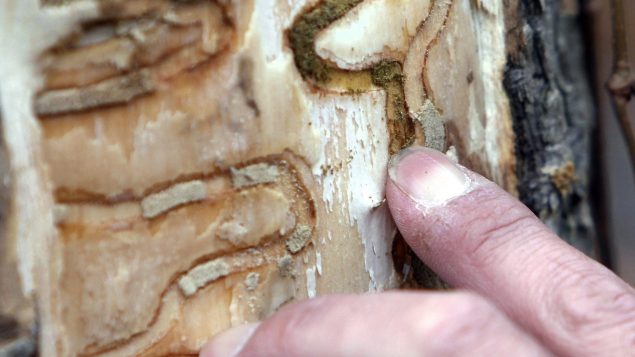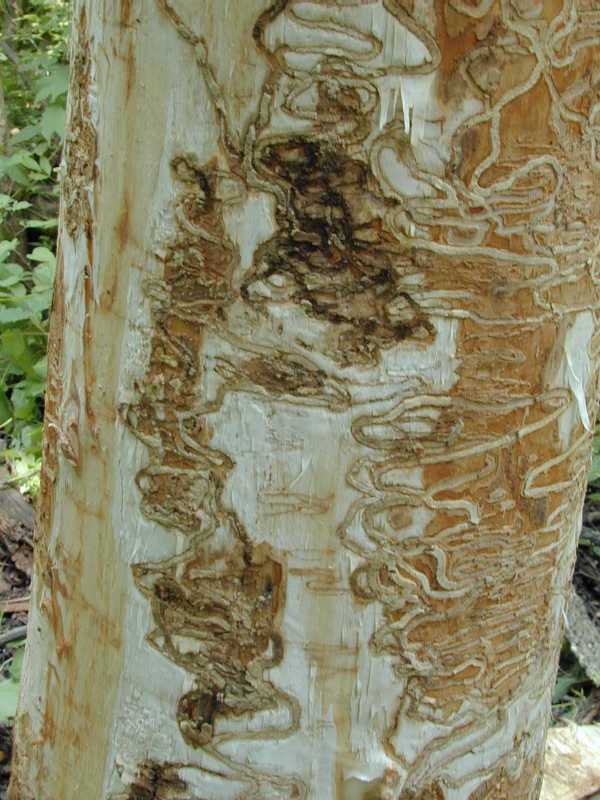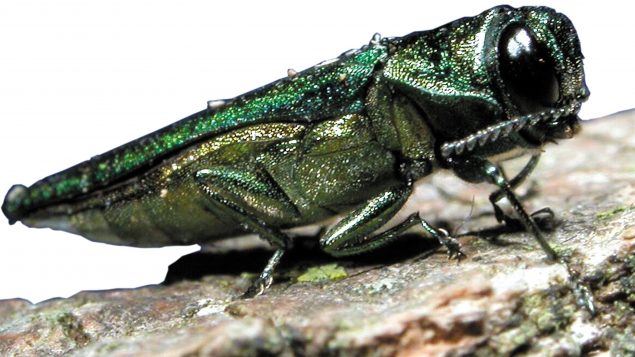The emerald ash borer, originally from Asia, has killed millions of trees in North America and has newly been found in Canada’s eastern province of New Brunswick. The bright green beetle invaded the province of Ontario in 2002, spread to neighbouring Quebec and last year, was detected in Manitoba.

Dan Kraus asks Canadians to only use firewood from areas where they will use it to avoid spreading emerald ash borers.
Huge swath of forest at risk
“It burrows into the trees and cuts off the flow of nutrients. And after a few years of being infested with emerald ash borer, trees will die,” explains Dan Kraus, senior biologist with the Nature Conservancy of Canada.
Ash trees are common in forests stretching all the way from the eastern Maritime provinces to the central province of Manitoba, a distance of some 5,000 km. Several species of ash have been listed as critically endangered by the International Union for Conservation of Nature.
Ash trees are an important part of the forest ecosystem, they are the first trees to regenerate in a forest and the white ash is used to make furniture, baseball bats and hockey sticks.

The emerald ash borer leaves a telltale D-shaped mark when it emerges from the tree. (Mike Gross/AP Photo/file)
Don’t transport firewood, warn conservationists
Canadians are asked to not transport firewood, as this is a common way for the beetle to spread. It cannot fly very far and often will hitch a ride on firewood that Canadians may buy and transport for use at cottages or campsites. It may also travel on branches, nursery stock or wood chips.
Once the emerald ash borer is well established in a tree there is nothing that can be done to save it. In cities, if an invasion is detected early, there is some chance to control its spread. Citizens should look for signs like the crown of the tree declining, leaves losing their green colour, and D-shaped holes that are made when the beetles emerge from the larval stage.
If they see these, people are asked to get in touch with their local municipality of the Canadian Food Inspection Agency.
Parasitic wasps offer some hope
In the U.S., scientists have introduced parasitic wasps that feed on the emerald ash borer larva and are studying this as a possible way to keep the beetles at bay. There are some natural predators in Canada such as woodpeckers, other birds and some insects, but not enough to keep the emerald ash borer in check.

Once the emerald ash borer is well-established it is impossible to save an ash tree. (Canadian Food Inspection Agency)







For reasons beyond our control, and for an undetermined period of time, our comment section is now closed. However, our social networks remain open to your contributions.